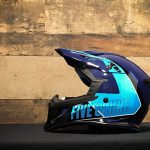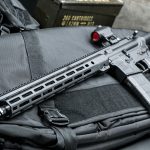Interbike couldnt have been better. The energy on the floor – from retailers and vendors alike – surpassed previous years, even with a few hurdles to overcome. Most retailers are having a banner year so far, with a strong early spring and even stronger summer. One retailer said that waiting to enter the show hall before the doors opened on the first day was like trying to get into a sold-out concert.
Yes, the Lance Effect is still driving enthusiasts to purchase new bikes and converting casual cyclists to enthusiasts at the same time, but the upbeat show was due in large part to a number of forces working together to fuel a very healthy industry.
First, the ski resort industry is getting behind the freeride market to fuel summer growth and balance out their winter revenues. The federal and state governments are also putting money into developing bicycle lanes, greenways, and pathways throughout the country. Perhaps the area of the industry with the most potential currently is the freeride market. Many of the larger players, like Trek and Specialized, have tried to address this area, but it remains the realm of smaller core brands like Kona, Santa Cruz, and Intense that started the movement. The product coming out of these companies matches the performance demanded from the users, but the companies also send out a marketing message that matches the culture. With the financial backing of some of the large publicly-traded ski conglomerates echoing this message, as well as many of the smaller ski resorts, like Silverton Mountain, the freeride market is likely to push even further into the mainstream than it has already.
Santa Cruzs Scott Turner pointed to the opportunity available from these resorts and the potential to grow the industry and recruit new riders. He said that even if the mountain bike park business grows to become only 15% of what these resorts do in the winter, the freeride market will more than double in size.
This trend is facing two major challenges that could limit growth. The primary concerns appears to be liability. Cruising down 35 degree slopes on a bike while the ground is a maze of rocks and fallen trees is considerably more dangerous than the same terrain on skis and snow. Some resorts are not willing to open their doors to mountain bikers because of the potential of a lawsuit, while others are embracing the culture full force.
MTB equipment vendors like Fox Racing, Giro, and Bell are addressing these concerns by developing body armor and new helmet technology. This year Giro introduced two new full-face helmets and one standard helmet designed specifically for the free-ride market. Both of the full-face helmets meet the new ASTM requirements for freeride MTB helmets.
The second challenge for this niche is currently the uber-extreme image that is portrayed in the mainstream media. The public perception of free riding is tattooed, pierced, cliff-divers on a bike. While this is an accurate portrayal of some of the industry, the fun and accessibility of freeriding, for the most part, is overlooked. Clearly, the sport should not be portrayed as a family-centric activity, but with todays suspension technology and protective gear, flying down the slopes at Whistler is not the exclusive domain of elite athletes anymore.
The marketing attention in the freeride category, from resorts, retailers, and vendors is spurring some new product developments as well. Last year, Giant introduced its Maestro suspension system in the freeride market and this year they extended the line to include a longer travel downhill-oriented bike.
While Giant is pushing its technology towards longer travel bikes, several other companies are bringing the technology of their long-travel freeride bikes into more ride-able, lighter, all-mountain freeride bikes. Santa Cruz introduced its Nomad model earlier in the year, bringing their VPP suspension platform into the category. Kona is also coming to the table with a new offering, introducing its Coilair the basics of the Coiler with an Air shock. Scott USA is pushing the envelope of carbon fiber design with its long-travel, full-carbon, full suspension bike the Ransom.
On the opposite end of the mountain biking spectrum, cross-country racing seems to be receiving some more attention from vendors in both product development and marketing. New suspension designs, and re-working old ones into platforms that are better suited for todays racers, are pushing the market and giving high-end enthusiasts new reasons to buy a bike. Orbea has designed a pivot-less cross country bike, called the Oiz, that actually rides like a super-light, full-suspension bike rather than a softer hard-tail. Another European company, BMC, is also introducing its first wave of full-suspension race bikes. Scott USA has yet to bring its Genius platform to Interbike due to its on-going patent dispute with Specialized.
The proliferation of carbon fiber in road bikes has worked its way into cross- country, and it is now the norm to have a carbon hard tail, with many companies bringing the black gold into their full-suspension line as well.
Trek has been making a full carbon hard tail for years, and Scott USA introduced its Scale carbon hard tail, which can be built to be less than 20 pounds, last year. This year, many other companies introduced super-light carbon hard tails including Specialized and Orbea. The technology in these bikes is not necessarily ground-breaking, but it demonstrates how the proliferation of carbon is reaching into every corner of the industry. The companies who are really working to fine-tune their carbon manufacturing and design processes are becoming the ones that stand out on the floor.
New shapes and designs for bikes and accessories that were impossible to achieve with steel or aluminum are popping up all over the show floor.
Specialized is focusing on their carbon fiber technology and bringing it into longer travel, full-suspension bikes with their all-carbon S-works StumpJumper FSR which integrates Foxs Brain shock with a lighter 130 mm travel platform that is designed to allow users to get into the backcountry and back out again.
The company has also begun working with more and more advanced shapes that enhance both the performance and the aesthetics of their bikes.
Likewise, companies like 3T, Easton, and Cinnelli are breaking new ground with ergo-shaped carbon handlebars, more aerodynamic forks, and molded stem/handlebar combinations.
The final major driving force in the MTB market is the proliferation of 29ers. Previously, the category was a small niche, almost underground movement, this year the big-wheels were front and center in many booths and many unexpected manufacturers entered the game. While last year the buzz surrounding 29ers centered on their advantage for taller riders, this year, many riders of all sizes are finding real advantages to the 29 inch wheels. As a result, vendors are expanding their size range to open the category to all riders. Perhaps the biggest surprise was Orbeas 29er. The Basque Co-op decided to produce the model at the request of its American distributor.
Entering the BMX zone feels almost like crossing the line between ski and snowboard at SIA. With all of the BMX brands clustered together, the category is beginning to take on a life of its own and create a real culture separate form the rest of the floor. The urban vibe to the area coupled with retailers who understand that they are selling a lifestyle and not just a bike, gave the floor a very different vibe than the rest of the show. On top of this several BMX softgoods companies are popping up that are creating real lifestyle brands. The BMX apparel companies took a real leadership position in how to sell style in the bike market.
On the computer and technology side of the market, the most notable event was Garmins entry into the market with a new GPS enabled bike computer/heart rate monitor. The unit is roughly two and a half times the size of standard computers, but boasts mapping features that enable the user to not only track each individual rides speed and distance but also “dot race” yourself on the mapping screen in order to improve your personal best.
Road bike manufacturers are facing a problem, and BOSS doubts it has much to do with Lance Armstrong retiring from professional racing. Building a carbon bike is no longer special — anyone can do it and everyone is doing it. A manufacturer needs to tell a carbon story apart from being black and light weight. Aesthetics, stiffness and performance are moving to the forefront.
Another factor which is quickly gaining momentum is customization. Companies like Parlee, and Calfee have been creating custom high-end carbon frames for years. Now Dedaccai is offering a custom carbon frame kit to frame-builders, and Guru is building a strong following on their ability to churn out more affordable custom framesets made out of any material.
Larger bike manufacturers are also fine-tuning the ride characteristics of their carbon offering. Cannondale is blending carbon and aluminum to create a line of bikes that all ride very differently, giving riders a choice between stiffness for sprinters, light-weight for climbers, or comfort for all-day and century riders. Giant is also fine-tuning the ride of their carbon bikes, but they are able to do so by simply adjusting the types of carbon used, the thickness, and direction of the carbon weave. The result is impressive, with a line of three contrasting frames that respond to the needs and budgets of almost any rider. Orbea was able to produce similar results and is offering a line of three carbon framesets that cater to everyone from the crit racer to the charity century rider.
Perhaps the biggest news coming out of the road market this year was the unveiling of SRAMs new road group. The company promises that the new components will offer the “most intuitive” shifting on the market. They said that the actual mechanical aspects of the shift levers were the most difficult part of the development process, but their engineers came up with an “astoundingly simple” platform. The road system was kept behind glass, but the company has several domestic racers testing the components currently.
This ability to fine tune the riding characteristics of carbon is bound to be the deciding factor for the IBD and its customer moving forward. While weight will always be a deciding factor, the ability to sell a frame which was thought out and designed to perform to a customers needs and riding style is clearly a more desirable factor.
Finally, while many in the industry were predicting a slow show after losing TREK, Gary Fischer, LeMond, and Klein, that was certainly not the case. Giant Bicycles stepped up its efforts and its presence on the floor to create a level of energy that the show has not seen before.
Giants North American president, Skip Hess, told BOSS that this year, his goal was to “own the show,” and TREKs exit provided the perfect opportunity to achieve this. BOSS spoke with many other vendors who said that they went into the show feeling that TREK had “done a disservice to the industry,” but once the doors opened and retailers marched onto the show floor, these vendors completely changed their mind. If anything, Trek missed their opportunity and opened the doors for others.















